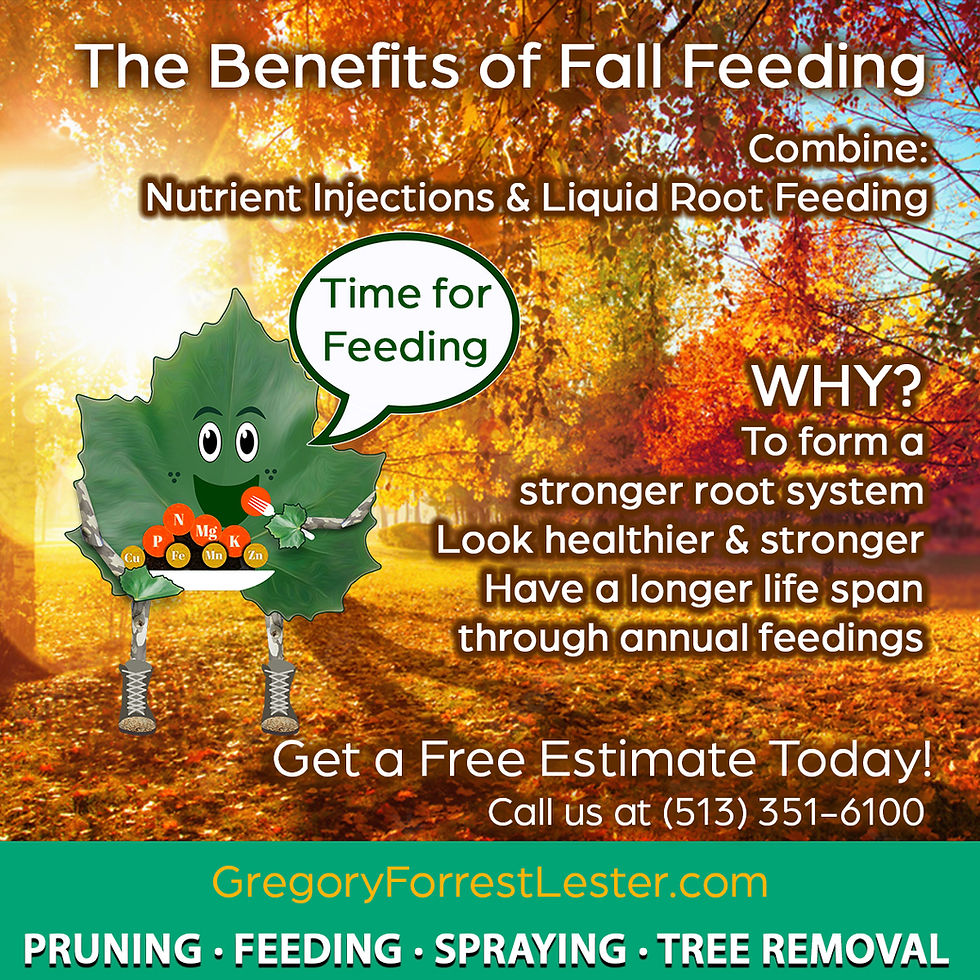Trees don’t die from old age
- Kevin Lester

- Mar 6, 2024
- 3 min read
Updated: May 17, 2024
Yes, you read it correctly – trees don't die from old age! Remarkably resilient, these natural wonders can thrive for hundreds or even thousands of years under optimal conditions and care. However, it's essential to be aware of the various threats that can compromise their well-being. Let's explore the factors that can potentially harm trees and how proactive care can mitigate these issues.


Tree Root Failure - Uprooting:
Trees exhibit astonishing resilience, especially in their ability to continuously grow roots. While most people recognize the primary function of roots in supplying nutrients and water to the tree, the secondary function is equally vital – anchoring the tree. The canopy acts as a massive wind sail, and roots respond by growing strategically to provide stability. Unfortunately, in residential yards, restricted root zones can limit this crucial function, making trees more vulnerable to uprooting.

Tree Canopy Failure - Major Branch Breakage:
Trees are designed to withstand the forces of wind, snow, and ice. However, in urban settings, they often face weather conditions with limited coverage, leaving them exposed to increased loads. Unrestricted sunlight in yards results in fuller canopies, adding extra weight. Combined with any defects in the canopy, this increases the risk of major branch breakage.

Tree Pests:
Pests are typically opportunistic, targeting trees with weakened immune systems. Various factors, such as restricted root zones, drought, branch failures, disease, and nutrient deficiencies, can compromise a tree's immunity. Some pests even transmit fatal pathogens. While many pests may not cause significant damage, they can take advantage of a tree's weakened state.

Tree Diseases:
Diseases can spread through various means, including air, soil, water droplets, and pests. Weakened trees, lacking natural defense mechanisms, become more susceptible to diseases. Identifying and addressing diseases promptly is crucial to maintaining tree health and preventing further decline.

Nutrient Deficiency:
The most significant threat to trees, nutrient deficiency compromises their immune response system. Prolonged deficiency makes trees susceptible to pests and diseases. Visible signs may include dying back of the canopy or discoloration, while the unseen consequence is declining or dying roots. Nutrient deficiency not only affects a tree's health but also its stability.
Drought:
Water is vital for tree hydration and overall well-being. Without water, trees can't absorb nutrients, leading to dehydration, nutrient deficiency, root decline, and degraded health. Drought conditions pose a serious threat to trees, emphasizing the importance of consistent watering.
Too Much Water:
Excessive water, often leading to root rot, is another peril. Clay-rich soils, like those in the greater Cincinnati area, can retain water for extended periods, making trees susceptible to root rot. This condition, similar to drought, results in stability loss, nutrient deficiency, and tree dehydration.
Conclusion:
While trees can face various challenges, proactive care is the key to mitigating these threats. Understanding their resilience and vulnerabilities allows us to foster a healthier environment for these magnificent living entities, ensuring they continue to thrive for generations to come.
At Gregory Forest Lester, Inc., our team of dedicated tree health professionals are committed to ensuring that your trees thrive for years to come. We understand the importance of maintaining the health and beauty of your trees, which is why we offer complimentary tree assessments. During these assessments, a Certified Arborist carefully evaluates your tree's needs, providing insights and recommendations tailored to its specific requirements. Whether your tree requires cabling, pruning, or a specialized treatment plan, our experts are here to help. Reach out to our team today to schedule your complimentary assessment and take the first step towards ensuring the longevity and vitality of your trees.



